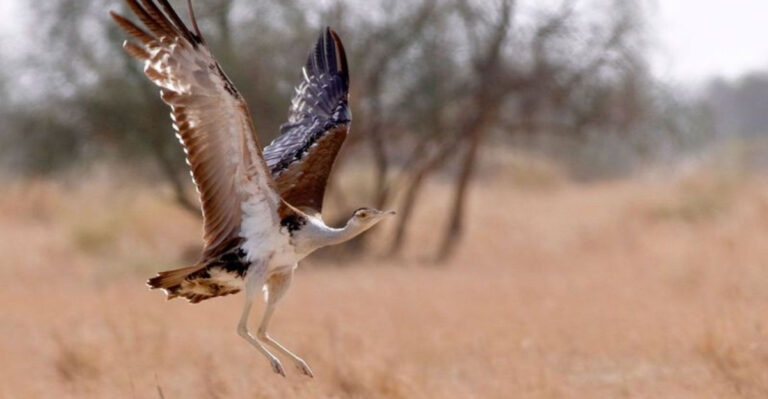How I Turned My Backyard Into An Oriole Paradise – And You Can Too!
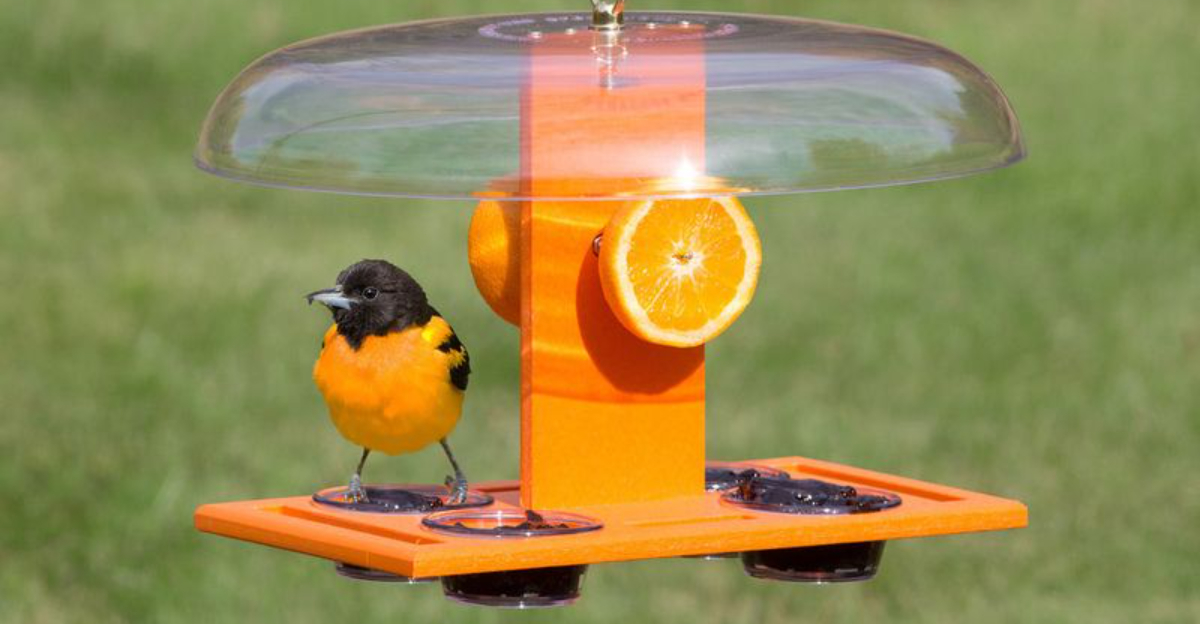
Imagine the flash of orange and black among your trees, accompanied by sweet whistling songs! Creating a backyard sanctuary for orioles brings vibrant color and delightful melodies to your outdoor space.
After years of trial and error, I’ve discovered foolproof methods to attract these stunning birds that anyone can implement, regardless of yard size or gardening experience.
1. Orange Halves: The Ultimate Oriole Magnet
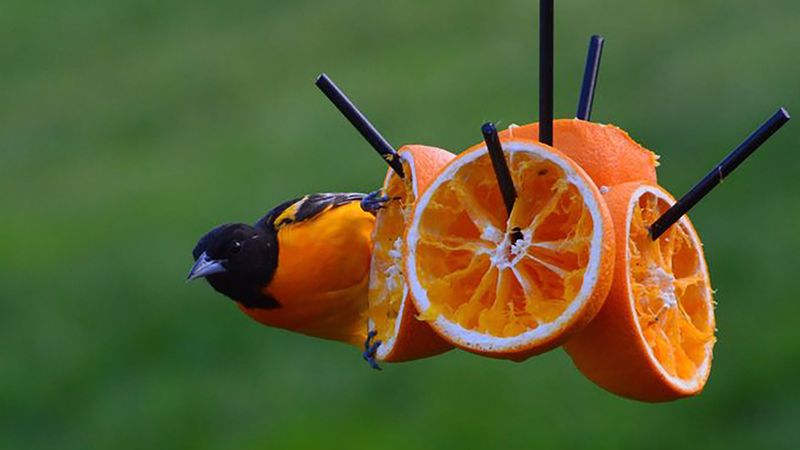
Nothing catches an oriole’s eye faster than bright orange fruit! I skewer halved oranges onto branches or place them in special feeders around my yard.
The vivid color acts like a beacon, drawing them in from impressive distances. My morning coffee routine now includes watching orioles eagerly sipping sweet juice while perched on my feeders.
2. Grape Jelly Stations: Sweet Temptations
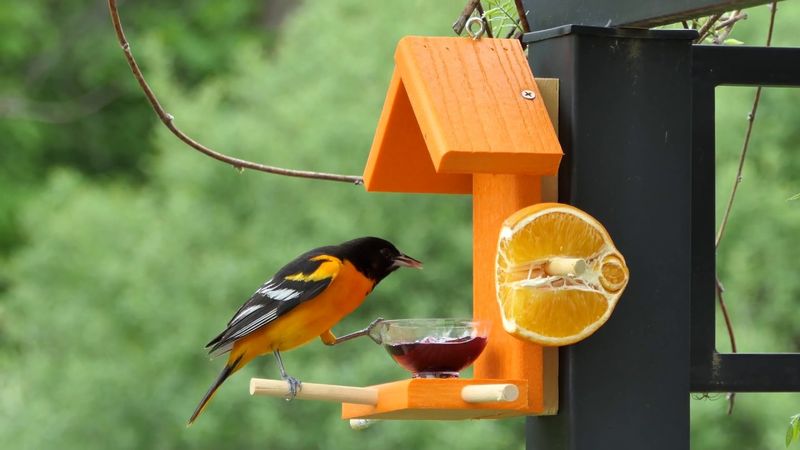
My secret weapon for oriole attraction sits in small, shallow dishes throughout the garden. Concord grape jelly proves irresistible to these fruit-loving birds!
I use specialized oriole feeders with built-in jelly cups or repurpose small dishes secured to fence posts. Just a tablespoon refreshed every few days keeps them coming back repeatedly.
3. Native Fruit Trees: Long-Term Attraction Strategy

Mulberry, serviceberry, and wild cherry trees transformed my yard into an oriole buffet. These native species provide natural food sources that orioles instinctively recognize.
Beyond attracting birds, these trees offer lovely spring blossoms and welcome shade. The investment takes time to mature, but creates a sustainable habitat that supports generations of orioles.
4. Water Features: Splashing Success
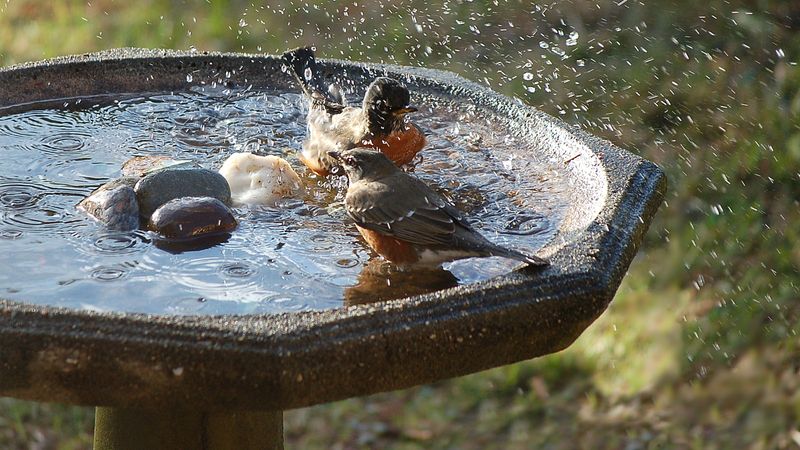
My simple bird bath with a solar-powered bubbler became an unexpected oriole hotspot! The moving water catches their attention while providing essential hydration and bathing opportunities.
Keeping the bath clean and filled at a consistent 1-2 inch depth works best. Positioning it near protective shrubs allows orioles to feel safe while enjoying refreshing dips during hot summer days.
5. Nectar Feeders: Hummingbird Stations With a Twist
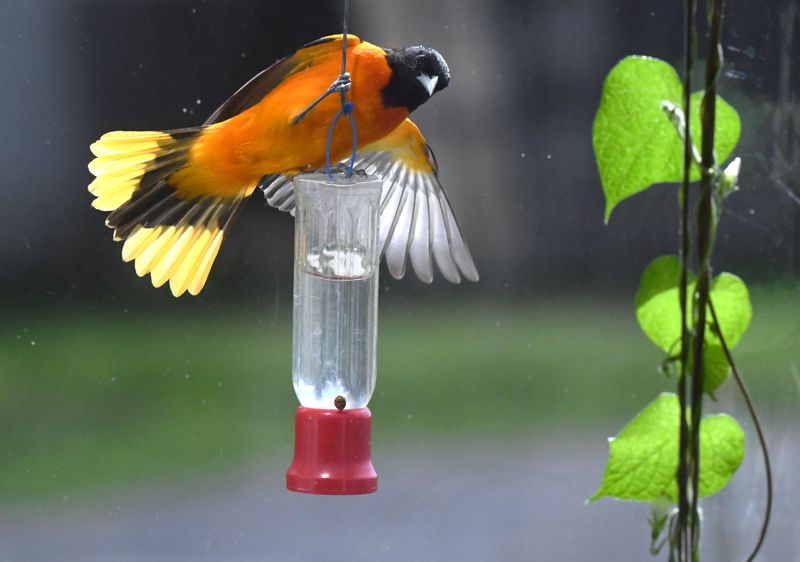
Contrary to popular belief, orioles love nectar too! I adapted hummingbird feeders with wider perches and larger feeding ports to accommodate orioles’ bigger beaks and bodies.
My homemade nectar recipe couldn’t be simpler: four parts water to one part sugar, boiled briefly and cooled. Avoid food coloring – the natural clear solution works perfectly when paired with orange-colored feeders.
6. Nesting Material Stations: String Theory
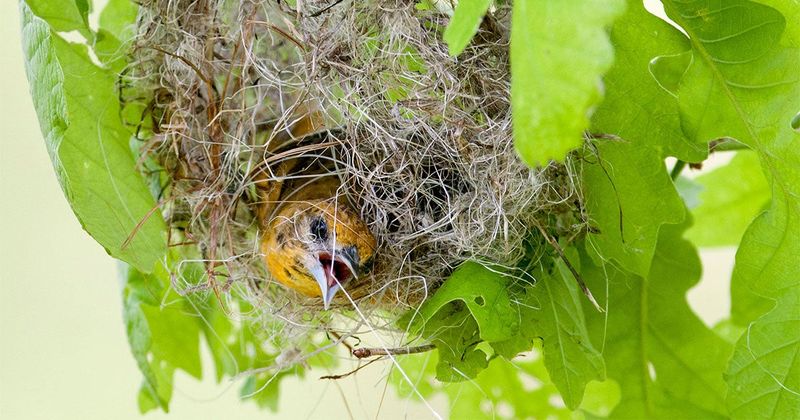
Hanging small bundles of natural fibers helped convince orioles to build nests nearby! I collect pet fur, short pieces of yarn, and plant fibers in suet cages around the yard.
Female orioles particularly appreciate these building material buffets during spring nesting season. Watching them carefully select just the right pieces for their hanging sock-like nests has become a fascinating springtime activity.
7. Trumpet Vines: Natural Nectar Factories
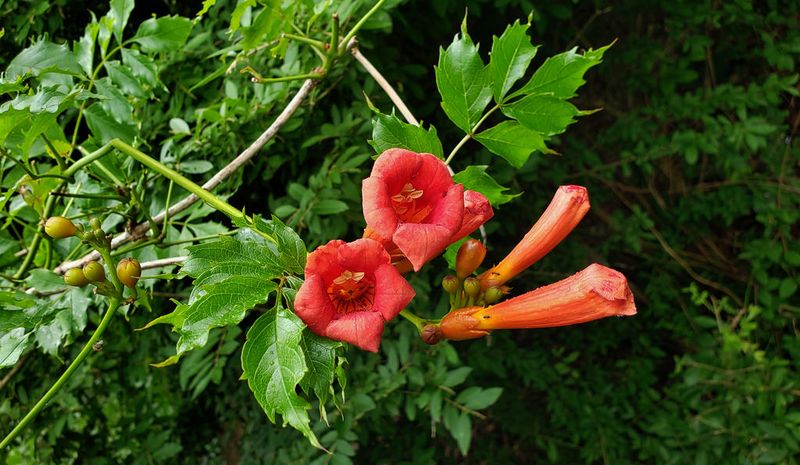
The trumpet vine climbing my garden fence produces tubular orange flowers perfectly shaped for oriole beaks. These native plants create natural feeding stations that bloom throughout summer.
While sometimes considered aggressive growers, strategic pruning keeps them manageable. The hummingbirds and orioles sharing these blooms create a wonderful wildlife spectacle just outside my kitchen window.
8. Pesticide-Free Gardening: Bug Buffet Benefits
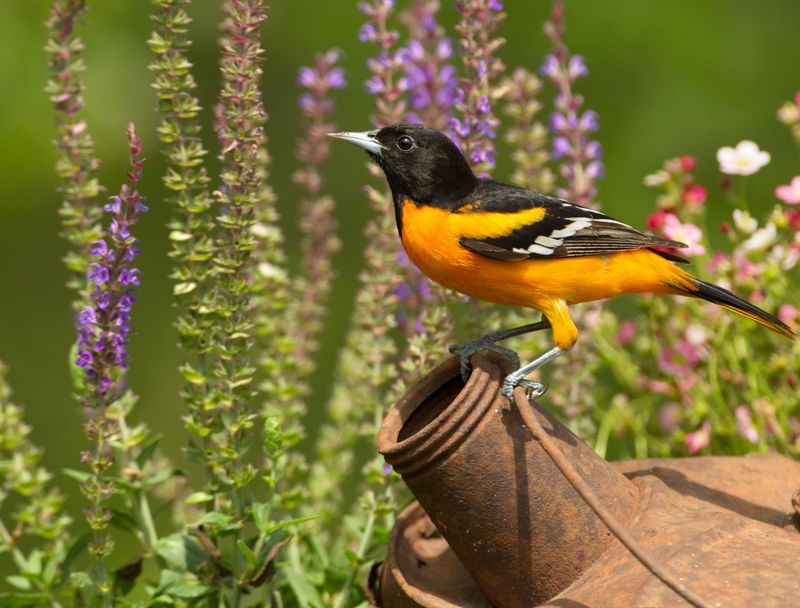
Abandoning chemical pest control created an insect smorgasbord that orioles can’t resist! While they love fruit and nectar, orioles also need protein-rich insects, especially when feeding nestlings.
My companion planting approach using marigolds and herbs naturally deters garden pests while allowing beneficial insects to thrive. The resulting ecological balance supports orioles while producing healthier plants.
9. Strategic Shelter: Protective Perches

Creating layers of vegetation at various heights made orioles feel secure enough to visit regularly. They prefer feeling protected while feeding, with escape routes clearly available.
My yard now features tall trees, medium shrubs, and lower plantings that provide multiple perching options. This tiered approach gives orioles confidence to linger longer, rather than grabbing quick snacks before retreating.
10. Mealworm Offerings: Protein-Packed Treats

Fresh or dried mealworms in shallow dishes near other feeding stations provide essential protein that parent orioles seek when feeding babies. During nesting season, this high-value food becomes particularly attractive.
I started with dried mealworms for convenience, then graduated to raising live ones. The orioles’ excited reactions to this protein boost during breeding season made the extra effort worthwhile!
11. Early Setup: Timing Is Everything
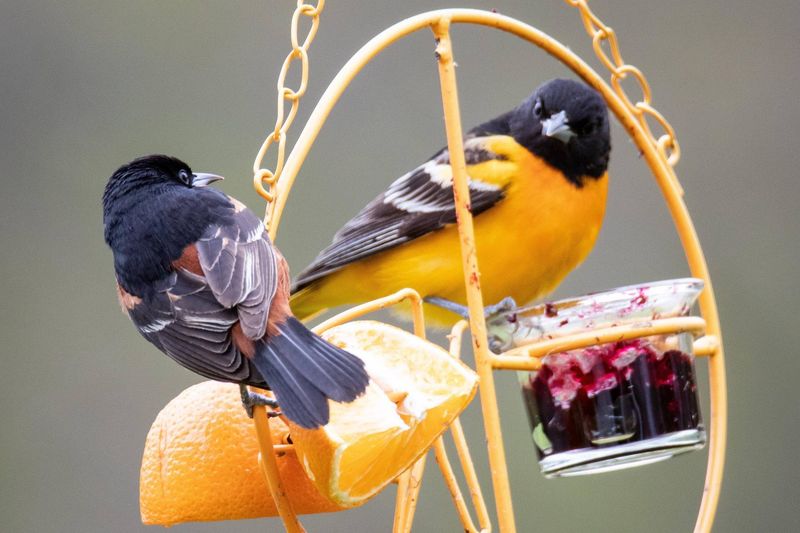
Having feeders ready before migration arrival dates dramatically increased my oriole visitor numbers! Research showed orioles typically reach my region by late April, so I prepare everything by mid-April.
Birds often remember reliable food sources and return annually. That first-impression hospitality when they arrive tired from migration creates loyal visitors. My early-season efforts pay dividends throughout the summer months.
12. Dedicated Oriole Feeders: Specialized Equipment
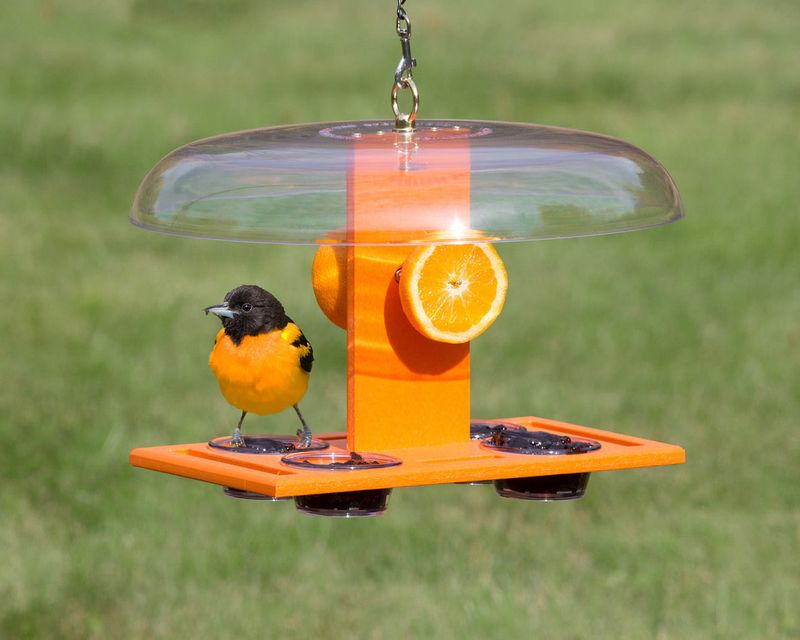
Investing in feeders specifically designed for orioles revolutionized my attraction success rate. These specialized stations feature larger perches, orange coloration, and multiple feeding options in one unit.
My favorite model includes jelly cups, fruit spikes, and nectar reservoirs all in one feeder. This consolidated approach lets me offer variety while making maintenance simpler, saving precious weekend time.
13. Protective Canopy: Weather Shields
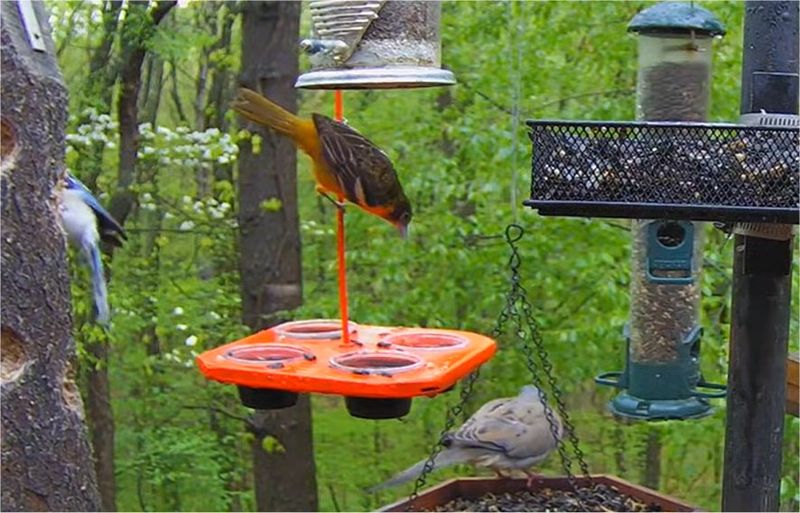
Adding small roofs or weather guards above feeding stations extended feeding times during rain showers. Orioles don’t mind light precipitation but avoid soaked food.
Simple clear plastic domes or wooden overhangs keep feeding areas usable regardless of weather. This thoughtful touch ensures continuous nourishment during spring’s unpredictable patterns, when migrating orioles most need reliable energy sources.
14. Oriole-Friendly Landscaping: Color Psychology
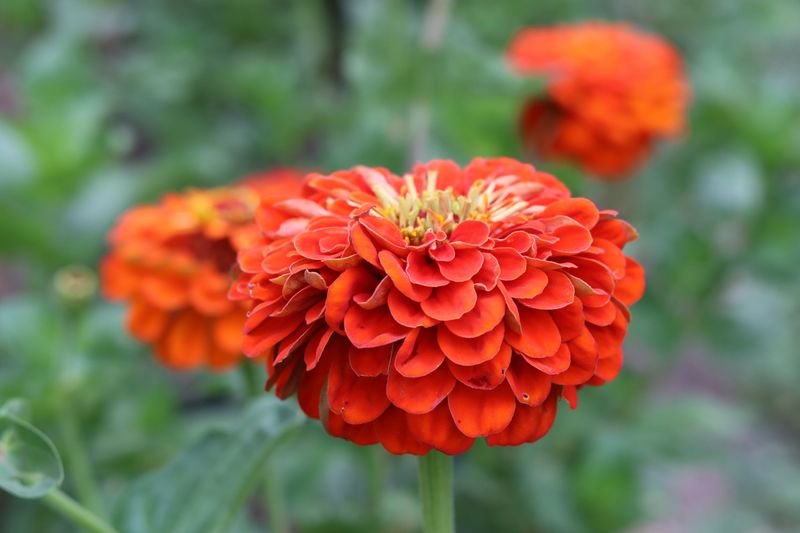
Strategically planting orange and yellow flowers throughout my garden created visual cues that attract orioles from above. These bright blooms act as natural billboards advertising a bird-friendly zone.
Coreopsis, black-eyed Susans, and zinnias form the backbone of my oriole color scheme. Beyond attracting birds, these hardy perennials and self-seeding annuals create a low-maintenance explosion of oriole-matching colors.
15. Consistent Maintenance: The Reliability Factor

Regular cleaning and restocking of feeding stations proved crucial for establishing my yard as a dependable oriole destination. These intelligent birds quickly recognize and avoid neglected or spoiled food sources.
My twice-weekly maintenance routine includes refreshing jelly, replacing fruit, and cleaning nectar feeders with a mild vinegar solution. This consistency built trust with my feathered visitors, who now arrive with clockwork regularity.

